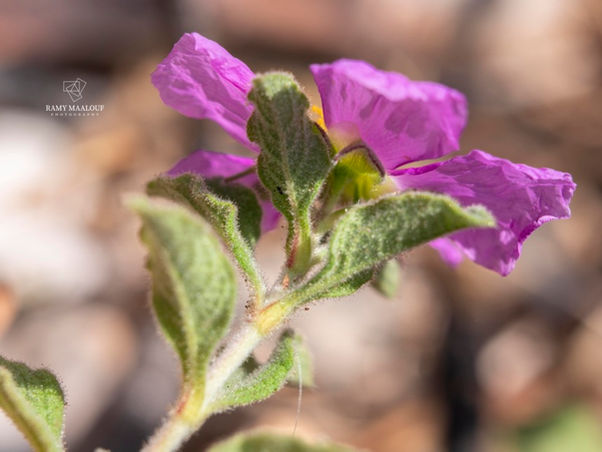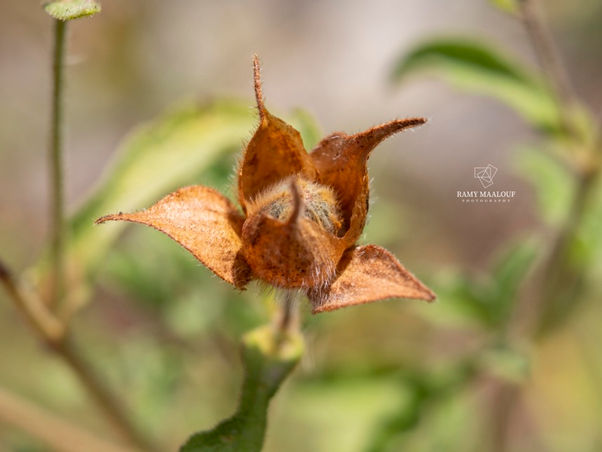Family |
Cistaceae
Cistus creticus
L.
Cistus creticus L.
(Nouvelle Flore du Liban et de la Syrie, vol. 2, Pl. CCXXXVII nº 2; 1983)
= Cistus villosus L.
Life-form & habit: Shrub 30–100 cm tall, strongly branched from the base and markedly woody; young stems densely pubescent.
Leaves: Petiolate, suborbicular, ovate-oblong to oblong; upper surface with short, sparse hairs; reticulately veined and puckered; 1–6 cm long × 0.5–2 cm wide.
Inflorescence & flowers: 1–6 flowers in loose, leafy terminal cymes.
Sepals: Five, equal, rounded at the base, densely hirsute, acute at the apex.
Petals: Rose-purple, 3–5 cm in diameter.
Style: As long as the stamens.
Fruit: Capsule densely pubescent.
Phenology: Flowers from February to April.
Habitat & elevation: Wooded and shrubby habitats, especially on sandstone and marl soils.
Lebanese distribution:
Ct.: Beirut, Dékouané, Qalmoun, Tripoli
Mi.: Maghdouché, Deir Moukhallès, ‘Aley, Diq el-Mahdi, Bzoummar, Bikfaya, Harissa, Terbol, Douma
Mm.: Qannoubine, Bcharré, forest of Ehden
S. Ct.: Marqab
Mi.: Bhamra
NLatt.: KessabNative range: Albania, Bulgaria, Corse, Cyprus, East Aegean Is., Greece, Italy, Kriti, Lebanon-Syria, Morocco, NW. Balkan Pen., Palestine, Sardegna, Sicilia, Türkey, Türkey-in-Europe. (KEW)
Introduced into: California, New Zealand North, New Zealand South, Tasmania. (KEW)









